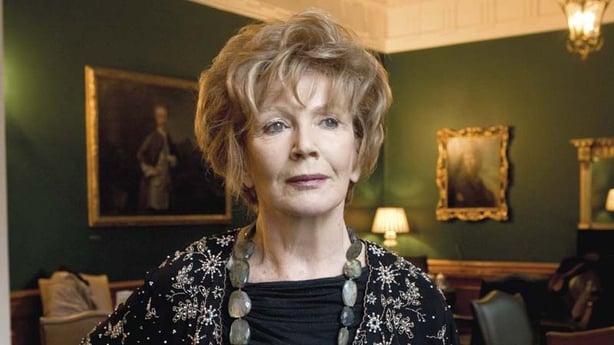Ever thought about writing non-fiction, be it an essay, a memoir or even a brief snapshot of your life? Why not take the leap?
In a new series, author, critic and broadcaster Cristín Leach explores the craft of non-fiction.
The first sentence (and this is true for non-fiction, fiction, and all kinds of writing) must situate your reader somewhere on the map you are about to draw for them with the rest of the piece. Everything flows from the opening line, which should land your reader immediately in the material to hand, and leave them wanting more.
It doesn't have to be momentous. My 2019 essay While She Was Sleeping begins, "My granny got more Christmas cards than anyone I know." What does this sentence tell you? That she was loved and that this is the end of an era, because who sends Christmas cards anymore? In the next sentence, the cards begin to amass, and now my reader knows where we are, and when, and what is likely to happen next: "At the end of 2016, they crowded the surfaces of the nursing home room, clustered under the television, on the windowsill, the bedside locker."

"The two dreams could not be more contrasting."
The job of a first sentence is to do more work than each of the individual words within it. It must contain something of the situation and the story. In her craft book, The Situation and the Story: The Art of Personal Narrative (2001), Vivian Gornick writes:
"Every work of literature has both a situation and a story. The situation is the context or circumstance, sometimes the plot; the story is the emotional experience that preoccupies the writer: the insight, the wisdom, the thing he has come to say."
Gornick's remarkable memoir about her relationship with her mother, Fierce Attachments (1987), begins: "I’m eight years old." What weight those four words can hold.
A first sentence can tell us the world we are in, emotionally, geographically, socially, historically, psychologically.
Some of my favourite memoirs have opening lines that operate as curious pairs produced independently and years apart: writer Edna O’Brien’s "The two dreams could not be more contrasting." (Country Girl, 2012) and actor Gabriel Byrne’s "How many times have I returned in my dreams to this hill." (Walking With Ghosts, 2020). Or artist Tracey Emin’s "When I was born, they thought I was dead." (Strangeland, 2005) and art critic Tom Lubbock’s "The news was death." (Until Further Notice I am Alive, 2012).
These lines introduce the author’s voice, hint at the tone of the tale, and the concerns they are setting out to explore. Poet Doireann Ní Ghríofa’s essay/memoir non-fiction hybrid, A Ghost in the Throat (2020), begins, "This is a female text." Writer Ian Maleney’s book of essays, Minor Monuments (2019), begins, "The first time Niamh came with me to my parents’ farm, I took her to the bog." Author Ann Patchett’s book of essays, This is the Story of a Happy Marriage (2023) begins, "I have never liked Christmas." Art critic and writer John Berger’s perennially compelling treatise Ways of Seeing (1972) opens with the line, "Seeing comes before words."
A first sentence can tell us the world we are in, emotionally, geographically, socially, historically, psychologically. Make it do as much work as you can. It should be possible to dig right down into it, even if it is only four words long.
Cristín Leach's From Ten till Dusk, A Portrait of the Royal Hibernian Academy of Arts in 12 Stories is published by the RHA - read an extract here
